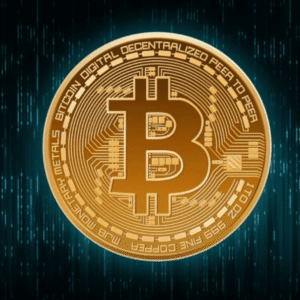Cryptocurrency continues to be one of the most exciting and talked-about innovations of our time. Whether it’s headlines about Bitcoin hitting new highs, Ethereum’s tech evolution, or the growing adoption of crypto across industries, one thing is clear: digital currencies are here to stay. But if you’re new to the crypto world, the first step can feel intimidating. How do you safely buy Bitcoin or Ethereum in 2025?
This beginner-friendly guide walks you through the entire process with clarity, confidence, and caution. Along the way, we’ll unpack the risks, compare popular platforms, share best practices, and help you avoid common mistakes. Let’s get started.
Why Buy Bitcoin and Ethereum in 2025?
Bitcoin (BTC) and Ethereum (ETH) aren’t just digital coins; they represent foundational pillars of the blockchain economy. Bitcoin, often dubbed “digital gold,” is prized for its decentralized scarcity and store-of-value potential. Ethereum, meanwhile, fuels decentralized applications (dApps) and innovations like NFTs, smart contracts, and DeFi.
In 2025, both assets are expected to benefit from broader mainstream adoption, evolving regulations, and integrations into traditional finance. With ETFs and institutional investment growing, the opportunities for early retail participants remain significant.
What to Know Before You Buy
Before diving in, it’s important to understand some key points:
- Volatility: Crypto prices can swing wildly. Never invest more than you can afford to lose.
- Security: You are responsible for the safety of your crypto. Knowing how to store it securely is crucial.
- Scams Exist: With opportunity comes risk. Only use reputable platforms.
Let’s now walk through the practical steps to buy Bitcoin and Ethereum.
Step 1: Choose a Trusted Crypto Exchange
To buy crypto, you’ll need an account on a cryptocurrency exchange. These platforms let you trade fiat (like USD or EUR) for digital assets like Bitcoin and Ethereum.
Top Crypto Exchanges in 2025
Here’s a comparison of the most popular and trusted crypto exchanges for beginners:
| Exchange | Security | Fees | Supported Coins | Regulation | Best For |
|---|---|---|---|---|---|
| Coinbase | Very High | Medium | 200+ | U.S. Regulated | Easy UX, Beginners |
| Binance | High | Low | 350+ | Varies by Region | Low Fees, Advanced Users |
| Kraken | Very High | Low | 200+ | U.S. Regulated | Secure, Staking |
| Gemini | Very High | Medium | 100+ | U.S. Regulated | Security-Conscious Users |
| eToro | High | Medium | 100+ | Globally Regulated | Copy Trading, Beginners |
Each platform comes with its pros and cons. Choose based on your location, security preferences, fee tolerance, and ease of use. For most beginners, Coinbase offers the simplest onboarding process.
Step 2: Set Up Your Account and Verify Identity
Once you’ve picked your exchange, create an account. Most exchanges require you to:
- Sign up with an email and password
- Enable two-factor authentication (2FA)
- Complete KYC (Know Your Customer): Upload your ID, a selfie, and sometimes proof of address
This is a standard process required to comply with global anti-money laundering (AML) regulations.
Step 3: Fund Your Account
Next, you’ll need to deposit fiat currency into your account. Most exchanges accept:
- Bank transfers (ACH, SEPA, wire)
- Debit/credit cards
- Third-party payment services like PayPal (availability varies by region)
Bank transfers usually have the lowest fees but take longer. Card payments are faster but costlier. Choose the option that best fits your needs.
Step 4: Buy Bitcoin or Ethereum
Once your account is funded:
- Navigate to the “Buy/Sell” section.
- Select the coin: Bitcoin (BTC) or Ethereum (ETH)
- Enter the amount in your local currency or crypto
- Confirm the transaction details
- Hit “Buy”
And just like that, you own crypto!
Step 5: Secure Your Assets
Owning crypto means securing it too. Leaving coins on an exchange is risky; exchanges can be hacked, or access could be frozen.
Best Practices for Crypto Storage
- Hot Wallets (online/mobile apps): Convenient but vulnerable to cyberattacks
- Cold Wallets (hardware wallets): Offline and extremely secure
Recommended options include:
For large amounts, always use a cold wallet.
How to Choose Between Bitcoin and Ethereum
Not sure which coin to buy? Here’s a side-by-side comparison:
| Feature | Bitcoin (BTC) | Ethereum (ETH) |
|---|---|---|
| Purpose | Store of value, digital gold | Smart contracts, dApps platform |
| Supply Cap | 21 million | Unlimited (but with burn mechanism) |
| Network Upgrade | Rare (hard forks) | Frequent (e.g., Ethereum 2.0) |
| Speed | Slower (10 min blocks) | Faster (12 sec blocks) |
| Security | Extremely secure | Very secure, evolving |
| Volatility | High | High, but less than altcoins |
Both have merit. Many investors choose a balanced approach, allocating funds to both assets.
Tips for Buying Crypto Safely in 2025
- Avoid unknown exchanges or P2P trades unless you’re experienced.
- Beware of phishing links. Always double-check URLs.
- Don’t fall for guaranteed profit schemes. If it sounds too good to be true, it is.
- Update your wallet firmware and use strong passwords.
- Keep your private keys private. If someone else has them, they own your crypto.
What Are the Fees to Expect?
Crypto transactions come with various fees:
- Trading fee: Charged by the exchange (typically 0.1% – 1%)
- Network fee: Paid to miners/validators (varies by blockchain usage)
- Withdrawal fee: Fee to move coins from exchange to wallet
Binance and Kraken are known for lower fees, while Coinbase offers simplicity with slightly higher costs.
Can You Buy Crypto Without an Exchange?
Yes, you can use:
- Bitcoin ATMs: Buy with cash, but fees are high
- Peer-to-peer platforms like LocalBitcoins or Paxful
- Crypto debit cards: Some allow top-ups and purchases directly
These methods require extra caution. Stick with exchanges unless you know the ins and outs.
Should You Dollar-Cost Average (DCA)?
One effective strategy for beginners is dollar-cost averaging (DCA): investing a fixed amount regularly regardless of price. This reduces risk and emotion-driven decisions.
Many exchanges like Coinbase and Gemini support recurring buy options.
Regulatory Landscape in 2025
Regulation continues to shape the crypto world. The MiCA framework in the EU and improved SEC oversight in the US aim to protect investors while encouraging innovation.
Before buying, check your country’s stance on:
- Crypto legality
- Tax obligations
- Exchange licensing
Being compliant now avoids headaches later.
Final Thoughts: Entering the World of Crypto With Confidence
Buying Bitcoin or Ethereum in 2025 doesn’t have to be overwhelming. With the right tools, cautious mindset, and reliable resources, anyone can get started safely.
To recap:
- Pick a secure exchange
- Verify your identity
- Fund your account wisely
- Buy BTC or ETH, then secure it
- Understand fees and risks
- Stay informed and compliant
Crypto isn’t just a trend—it’s a new way of thinking about money, value, and ownership. Starting your journey today could be the smartest financial decision you make in the digital age.
Now, are you ready to take that first step?






